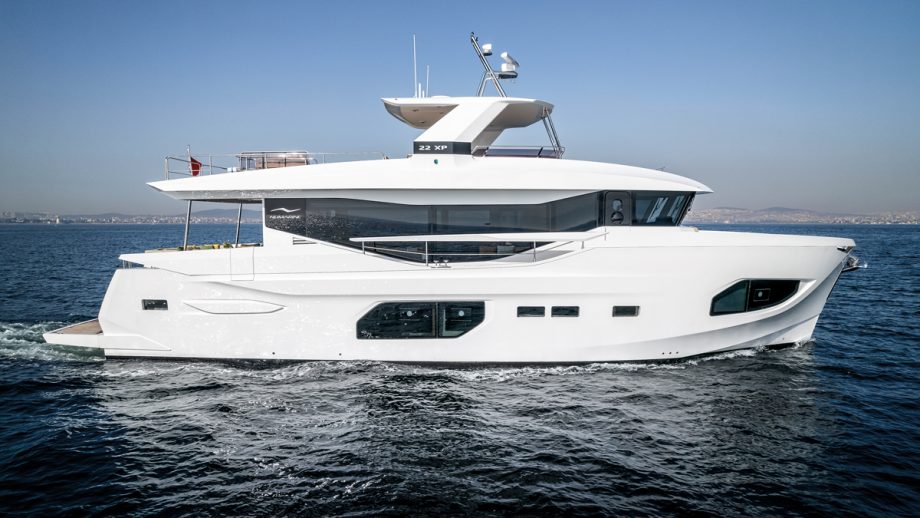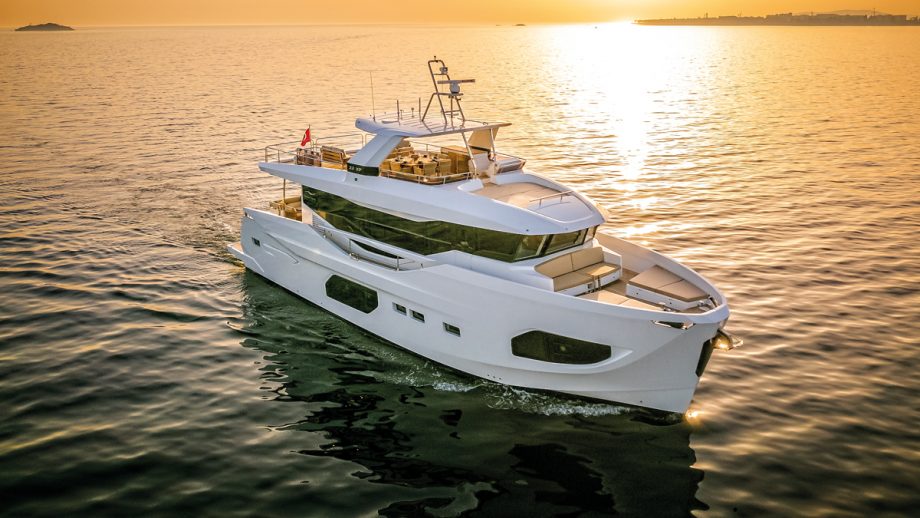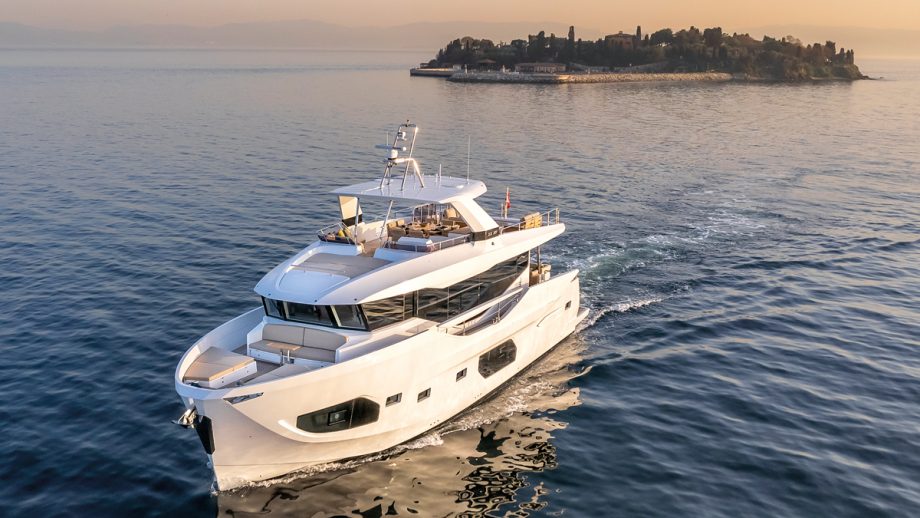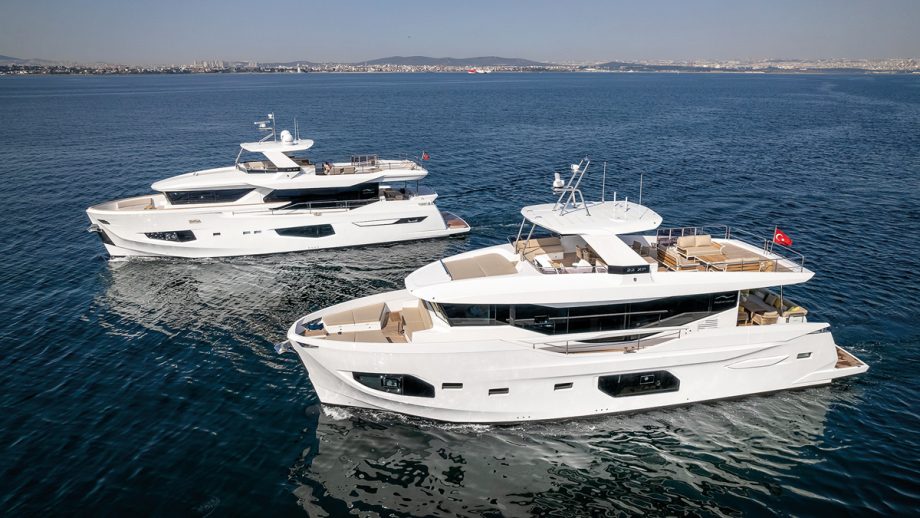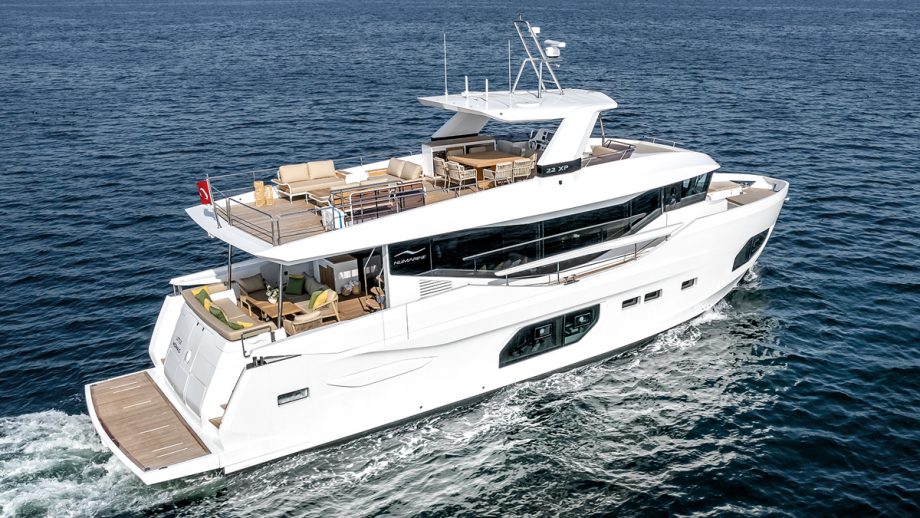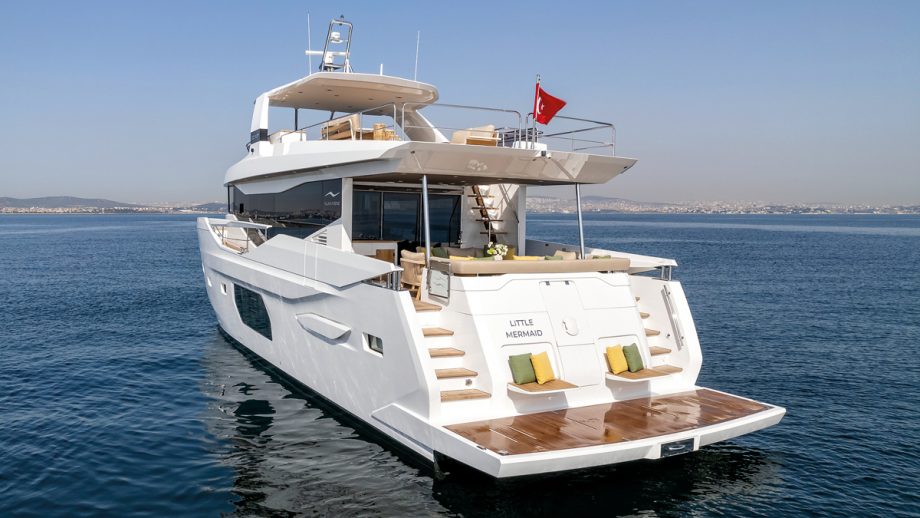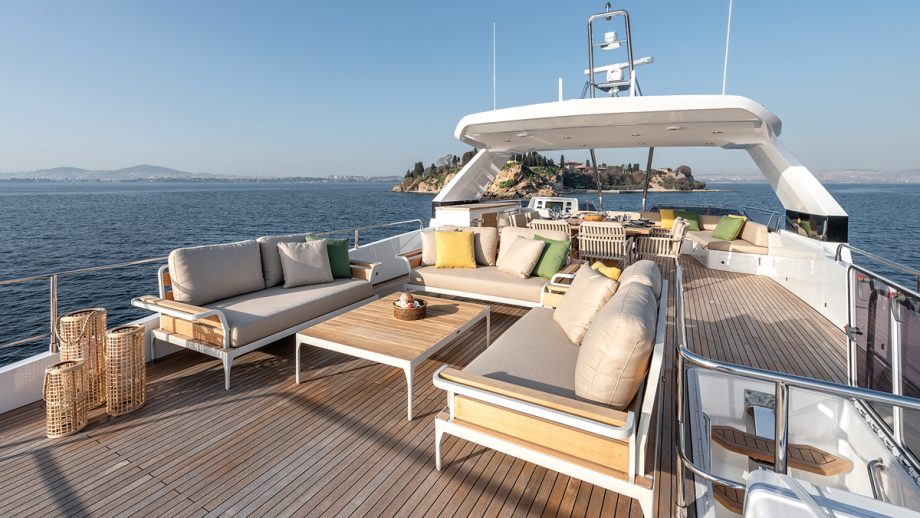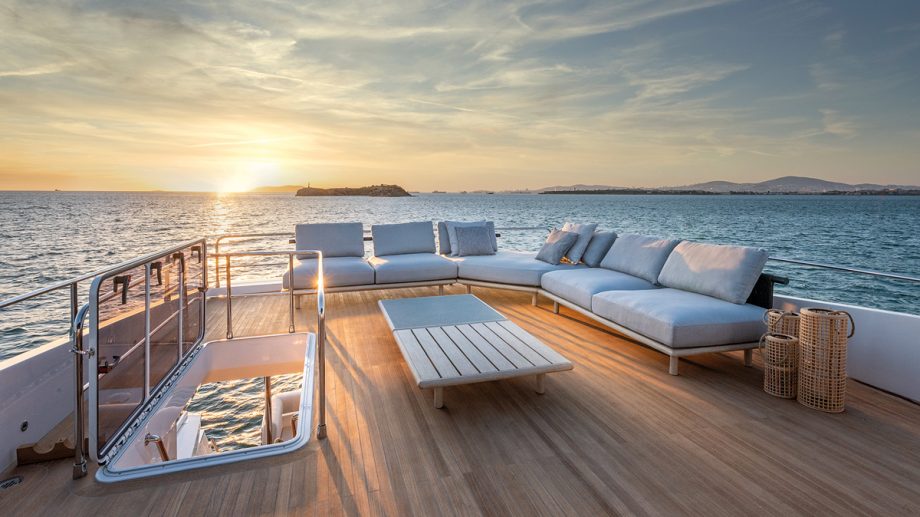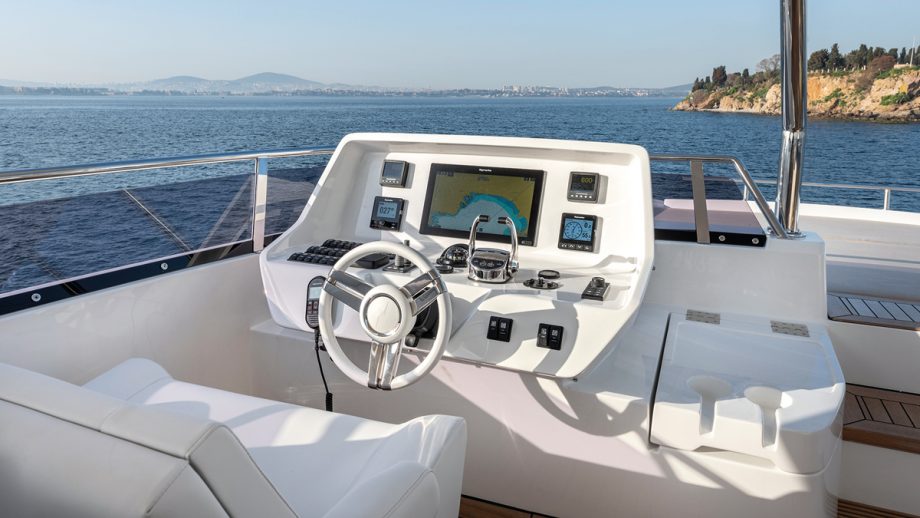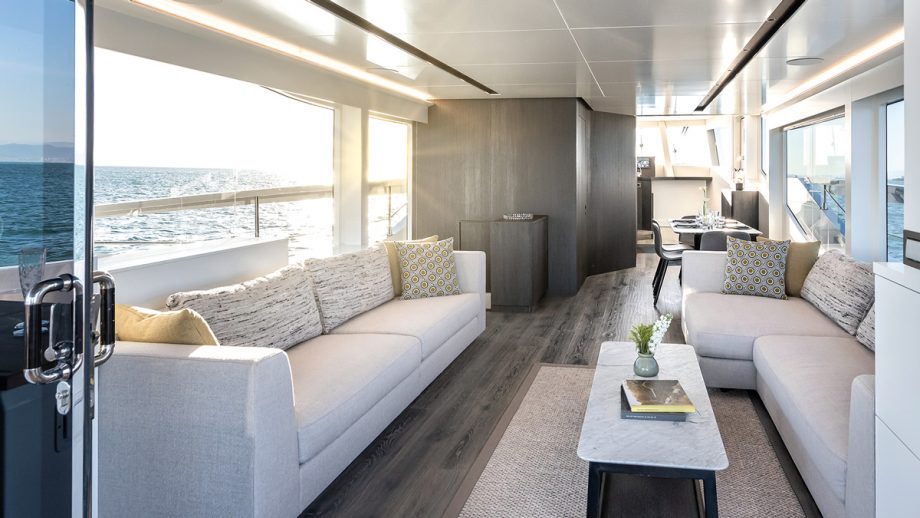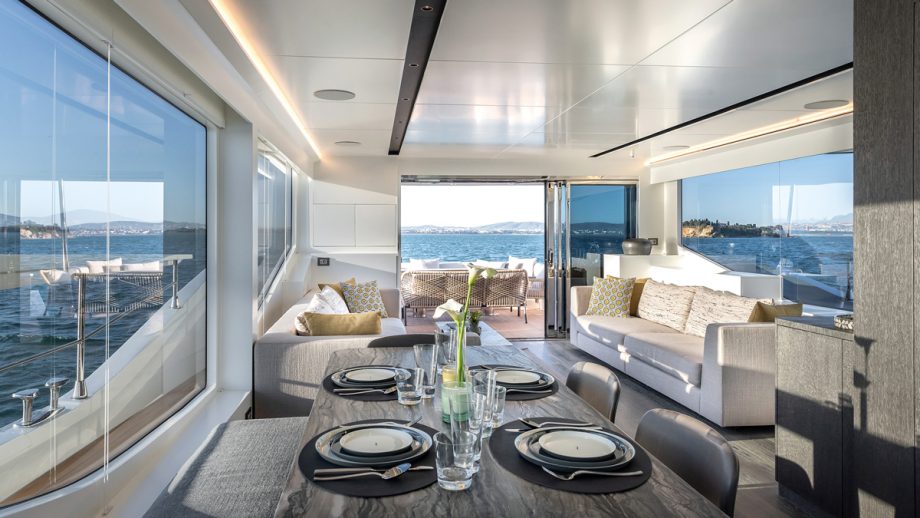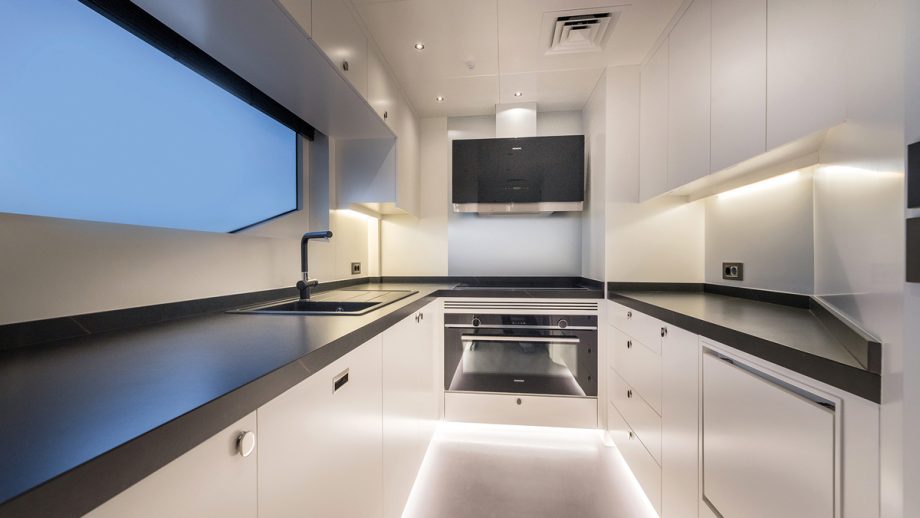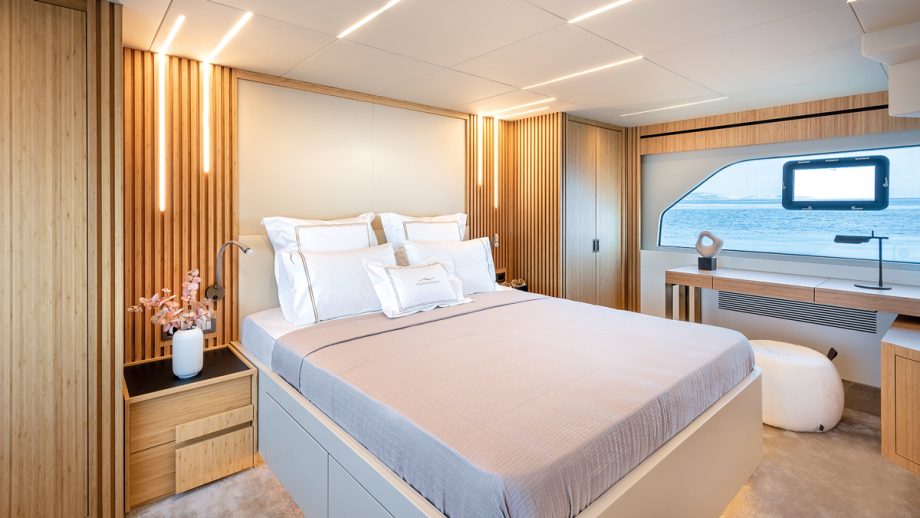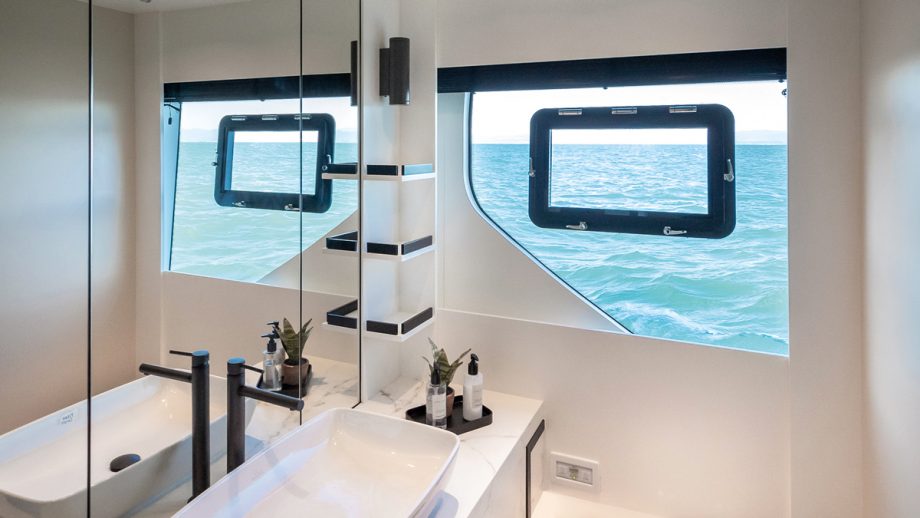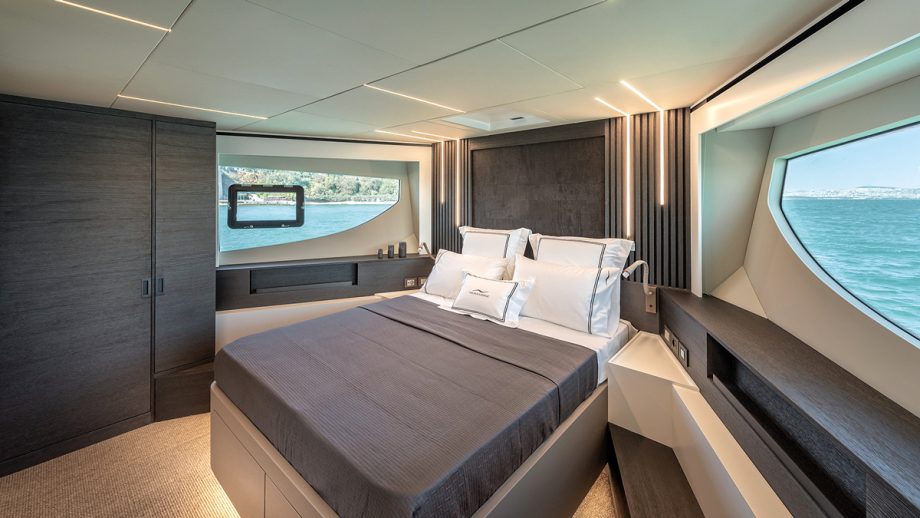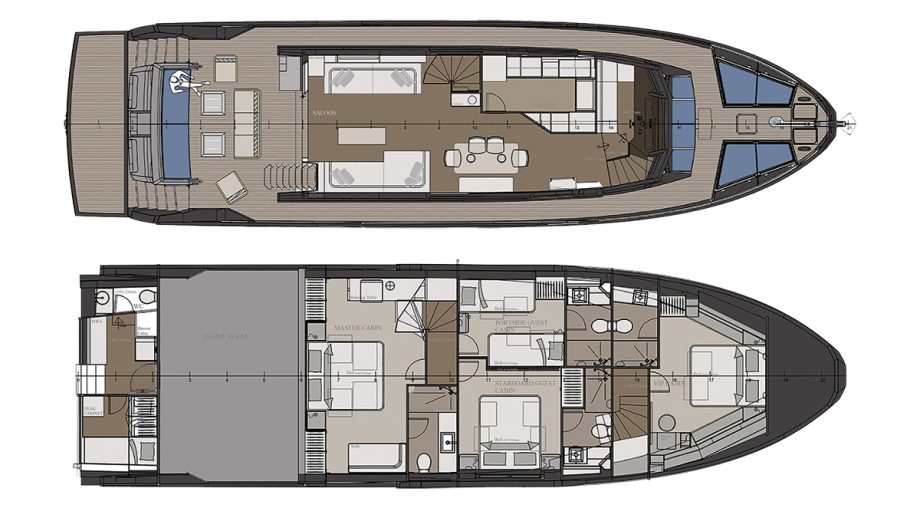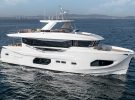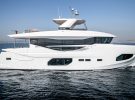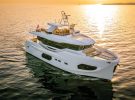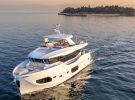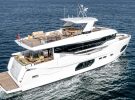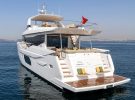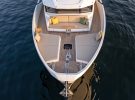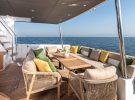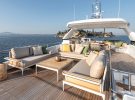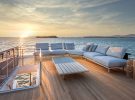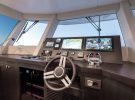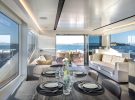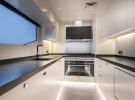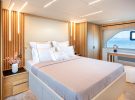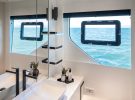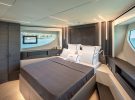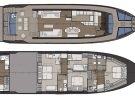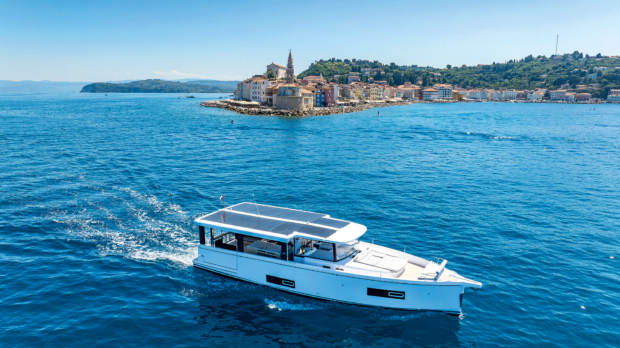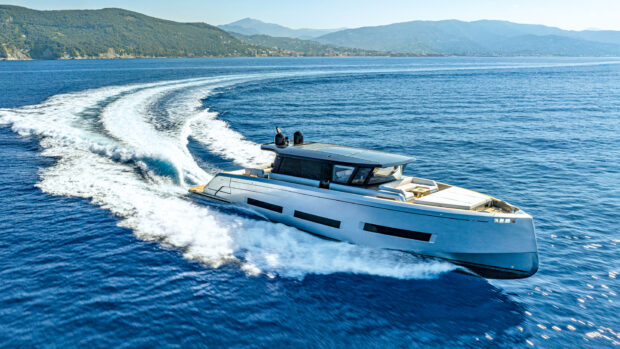The Numarine 22XP aims to emulate the success of her bigger sister the Numarine 26XP. We find out how on a full sea trial…
Numarine is an excellent example of how not to let the past define your future. The Turkish-based company, which celebrates its 20th anniversary this year, started out building mainstream planing motoryachts and over the course of its first 15 years in business it built a good many of them, around 135 in total between 52-105ft.
However, six or seven years ago its founder, owner and CEO Omer Malaz, a highly experienced yachtsman himself and always one of his own best customers, sensed a mood change among his clients and in the wider world market.
Demand for slower, more efficient, high-volume explorer yachts appeared to be gathering pace and he wanted in, personally and professionally.
Scroll forward to today and Numarine’s portfolio comprises just four craft, all of them throughly modern trawler-explorers from 72-122ft.
The smaller two – the all-new Numarine 22XP featured here and the four-year-old Numarine 26XP – are both built out of GRP and certified Cat B and Cat A respectively.
Article continues below…

Numarine 37XP yacht tour: This €13m explorer has its own sauna and gym

Horizon FD85 boat test
The Horizon FD85 doesn’t just have superyacht-baiting deck spaces and interior volume on its side; it will tackle long-distance voyages
The larger two – the five-year-old Numarine 32XP and the new-last-year Numarine 37XP – have steel hulls and composite superstructures and are built to ‘Class’.
And in just five short years it has delivered no fewer than 27 of these high volume semi-custom superyachts to loyal owners all over the world – three 22XPs, 17 26XPs, four 32XPs and three 37XPs.
Moreover, as of this summer, the yard has another 18 of them on order with deliveries stretching into 2024.

Numarine 22XP design language
Since it started, Numarine has relied on the same principal creative partners – Umberto Tagliavini for naval architecture and Can Yalman for exterior and interiors – and together they have been responsible for every Numarine to date.
Most recently they have been working on two new additions to the range, a bigger composite model whose precise length remains confidential until an imminent autumn boat show reveal and a new steel/aluminium flagship Numarine 45XP.
Like her older and bigger 26XP sister, the Numarine 22XP is available as either a full-displacement craft or as a faster planing model. The two versions are essentially the same in most respects, save for the drivetrain and changes to the hull form.

Foredeck lounge feels very safe and sheltered thanks to those tall bulwarks
Above the waterline you can’t tell them apart. The main tooling is the same. The hulls are made from bonding the same two moulded halves together, but they have different keel sections. The displacement hull has a bow-bulb and a rounder keel.
The planing version uses a flatter central keel section and has separately moulded spray rails bonded to the exterior after demoulding.
In displacement guise the necessary grunt comes from a pair of 425hp Cummins diesels, which is good for a maximum speed of around 12.5 knots, but for planing performance those are swapped for twin 1,200hp V8 MANs that push the top end up to more like 25 knots.

The displacement version has a range of more than 1,000nm at 10 knots
In terms of style, the Numarine 22XP carries the same design cues as her bigger sisters – high bow, tall bulwarks that run virtually through to the stem, wide flush side-decks well protected by generous upper-deck overhangs, sturdy hardtop, near-square transom, and of course forward-raked bridge windows – de rigueur for any trawler-explorer.
The way the bulwarks are rebated to enhance views from the main saloon and the chunky cap-rails have been Numarine signatures for many years.
Spatial awareness
The 22XP’s outdoor spaces are substantial – 172ft² (16m²) of particularly comfortable and well-protected foredeck terrace, a 258ft² (24m²) cockpit and a whopping 550ft² (51m²) flybridge with partial hardtop protection.

The vast 550ft² flybridge is open at the aft end but covered by a sturdy hard top further forward
That fly is getting on for 55ft (17m) long if you include the massive sunbathing area above the pilothouse. The usual mix of wet-bar, dinette, sun-pads or lounger space is all open to owner preferences.
The standard offer 334ft² (31m²) main saloon has a comfortable lounge area aft that, with aft-deck doors open, merges with the cockpit’s freestanding furniture to provide the flexible AC or no AC choices during the heat of the day.
It has to be said the views are splendid from all those sofas, inside and outside, despite the high bulwarks which vary in height from 36-41in (0.91m-1.04m). There’s an open-plan dining area to starboard adjacent to an enclosed galley to port.

Fabulous views from the main deck saloon
The latter aboard our test boat was perhaps too formal for mainstream tastes and made to look even more boxy given the rather severe black oak veneers that its interior majors on, but for other owners the galley can be open-plan and lighter veneers chosen.
Tucked up out of the way to port, the bridge is perhaps more geared to out-of-sight crew practicality too. The wheel and instruments are addressed by a high bench seat, which exaggerates the remoteness from the rest of the boat, although the view out is more than adequate to the sides and forward.
There’s a convenient side-deck door immediately to starboard of the bridge console that gives more direct access forward and delivers extra fresh air or perhaps a more discreet passage aft for crew. Plus there’s the option of a day-heads compartment by that door, although the boat we saw didn’t have one.

The black-and-white themed galley has a clean, functional look
Boutique service
Numarine projects itself as a boutique yard and, although still mindful of the efficiencies that come with series building as opposed to the less predictable semi-custom arena, it is always prepared to help owners get what they want in terms of furniture and décor, providing it doesn’t mean moving bulkheads or disrupting technical areas.
All the cabins aboard this model are on the lower deck and all have their own ensuite bathrooms and at least 6ft 9in (2.06m) of headroom throughout. There’s a full beam 215ft² (20m²) owner’s cabin aft and a 161ft² (15m²) VIP double cabin in the bow, which also enjoys its own private access via a staircase next to the helm.

The full beam owner’s cabin is amidships
Amidships, between the two main cabins, you can either opt for another big full beam double that’s almost as large as the owner’s cabin but without the big hull windows, or a smaller 129ft² (12m²) double to starboard and a 108ft² (10m²) twin opposite to port.
The latter is quite compact, so some owners may be happy to specify that one as a single. Most owners are likely to go for this four-cabin version and of the handful of boats already sold none have opted for three cabins thus far. There’s also room for a crew cabin aft of the engine-room.

The forward VIP cabin makes full use of the bow’s unusually wide beam
Accessed via a transom door and a four-step descent, it typically provides two beds and a mini-mess/utility space, but Numarine tells us a third bunk could be squeezed in there if needed.
The principal access to the engine-room is from that cabin and it has to be said the engine-room is splendid – everything accessible and plenty of headroom.
Given there’s no garage, tender stowage will be on the 108ft² (10m²) hydraulic platform, which has a quoted capacity of 1,000kg net. Potentially the tender has up to 20ft (6m) of beam to play with.

The hydraulic platform has a 1,000kg lifting capacity
Driving the Numarine 22XP: Long-range efficiency
The first XP to deliver was a planing model and the next two were displacement versions. We got to test the third, which was fitted with the inline six-cylinder 425hp QSB6.7s Cummins blocks and, as previously mentioned, has a top speed of 12.5-knots.
However, despite being capable of a bit more, we would suggest there is little point ever straying north of 10 knots. Flat out those two engines will burn almost 81 litres of diesel per hour, but drop things down to 10 knots and that consumption more than halves to 39 litres per hour, and at eight knots it almost halves again to 21 litres per hour.

The Numarine 22XP features exterior styling by Can Yalman
The latter is the recommended all-day, every-day chug, at which the theoretical range is well over 2,200nm, although with generators running and allowing for a generous reserve up to 1,800nm between fill-ups would be the comfortable figure on which to base passage plans. There’s capacity for 6,000-litres of fuel aboard.
We got to drive this one in June off Tuzla in near-perfect conditions – warm sunshine, virtually no wind and little swell. Suffice to say we can’t vouch for big-seas handling nor indeed the efficiency of the twin electric CMC Stabilis fin-stabilisers, which help counteract roll at anchor as well as low speed cruising.
What we can say about the handling is that the electro-hydraulic steering is remarkably responsive. We didn’t get to see what’s beneath the waterline, but the twin rudders must be substantial to turn her quite so swiftly at such modest speeds.
Price as reviewed:
£3,520,694.00 ex. VAT
Verdict
First and foremost, XPs are good quality designs that offer great value for money, and the new Numarine 22XP makes the formula even more affordable. There’s lots more to Numarine’s XPs that you can’t see. For instance, all the moulding work comes from closed-mould techniques. Indeed, it has been resin-infusing its hulls since the early days and boasts some of the best resources in Turkey. Also the attention given to sound and vibration mitigation aboard is far from typical. For each new model it seeks the advice of Dutch consultancy firm Van Cappellen, whose client list includes many of the world’s very best superyacht builders. The Numarine 22XP is exceptionally quiet, even by trawler yacht standards. If you are considering a navetta/explorer-style craft, this boat is well worth putting on your must-see list.
Details
Starting price: €3,580,000 (ex. VAT)
LOA: 22.00m (72ft 2in)
Beam: 6.00m (19ft 8in)
Draught (inc, props): 1.90m (6ft 3in)
Displacement (light): 52 tonnes (114,400 lbs)
Fuel capacity: 6,000L (1,320 Imp gals/1,585 US gals)
Water capacity: 1,100L (242 Imp gals/291 US gals)
Test engines: Twin 425hp Cummins QSB6.7
Top speed on test: 12.6 knots
Cruising speed: 8 knots
Cruising range: 1,829nm
Fuel consumption: 21lph
Noise: 56 d(B)A
CE category: B
Naval architecture: Umberto Tagliavini
Exterior/interior design: Can Yalman




